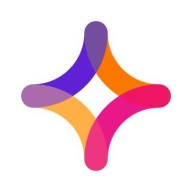

Jitterbit Harmony and Coupler.io are competing in the data integration market. Jitterbit Harmony is favored for comprehensive integration capabilities, while Coupler.io is preferred for simplicity and cost-effectiveness.
Features: Jitterbit Harmony provides advanced API management, data transformation, and process automation for complex integrations. Coupler.io focuses on data analytics and automation, emphasizing data synchronization and transfer to business intelligence tools.
Ease of Deployment and Customer Service: Jitterbit Harmony offers diverse deployment models with a robust support structure, catering to enterprise-level needs. Coupler.io has an intuitive setup requiring minimal technical support, suitable for smaller businesses or individuals.
Pricing and ROI: Jitterbit Harmony requires a higher initial investment but offers substantial returns through its extensive capabilities. Coupler.io is more affordable, providing quick ROI with its straightforward service and pricing, appealing to budget-conscious users.
| Product | Market Share (%) |
|---|---|
| Jitterbit Harmony | 0.6% |
| Coupler.io | 0.3% |
| Other | 99.1% |

| Company Size | Count |
|---|---|
| Small Business | 8 |
| Midsize Enterprise | 3 |
| Large Enterprise | 1 |
Coupler.io offers Google Sheets integration with the following data sources: Airtable, Xero, Pipedrive, HubSpot, Quickbooks, Jira, Google Sheets (to replace IMPORTRANGE), and more to be added soon.
Jitterbit Harmony offers an advanced integration platform that simplifies data transformation, helps users quickly connect apps, and automates workflows, streamlining complex business processes efficiently.
Designed to meet the high demands of modern businesses, Jitterbit Harmony enables seamless integration across cloud and on-premise environments. By leveraging its powerful tools and user-friendly design, users can accelerate innovation, reduce operational costs, and enhance productivity. It bridges the gap between traditional and emerging technologies, ensuring organizations can adapt quickly to market changes and remain competitive.
What are the key features of Jitterbit Harmony?Jitterbit Harmony finds its application across numerous industries, from enhancing data integration in the healthcare sector to optimizing supply chain logistics in manufacturing. It supports financial institutions by improving transaction processing and facilitates real-time data connectivity in retail environments, making it a versatile choice for diverse industries looking to innovate rapidly.
We monitor all Data Integration reviews to prevent fraudulent reviews and keep review quality high. We do not post reviews by company employees or direct competitors. We validate each review for authenticity via cross-reference with LinkedIn, and personal follow-up with the reviewer when necessary.